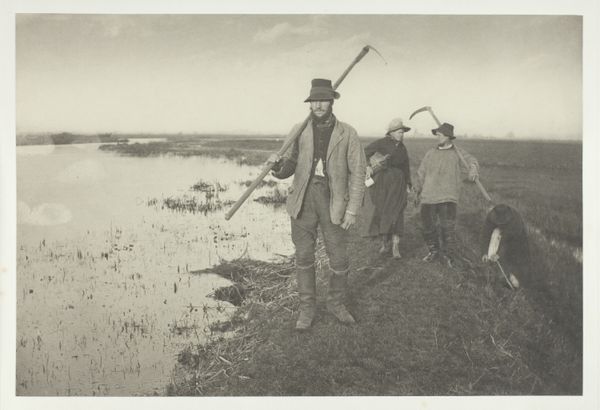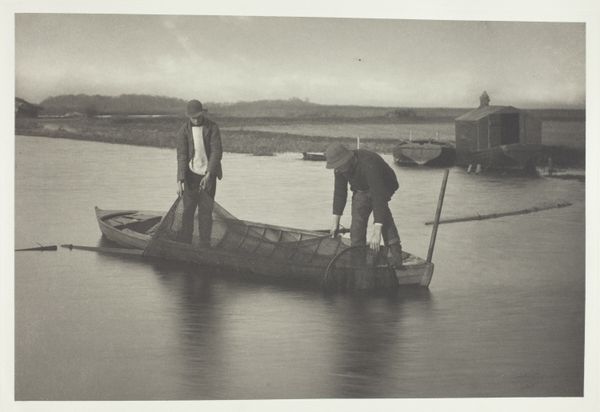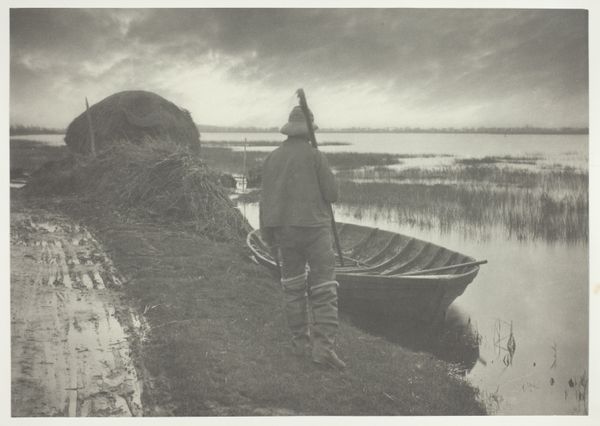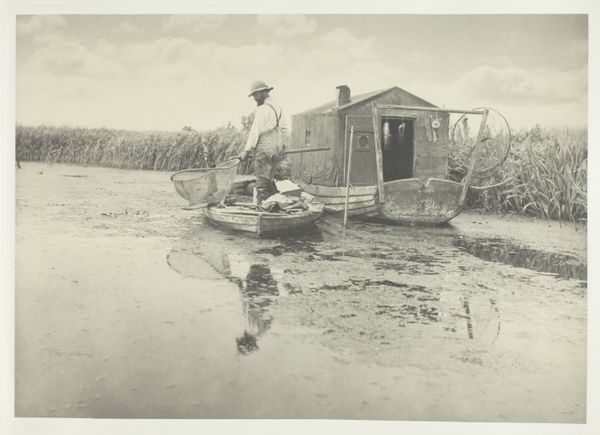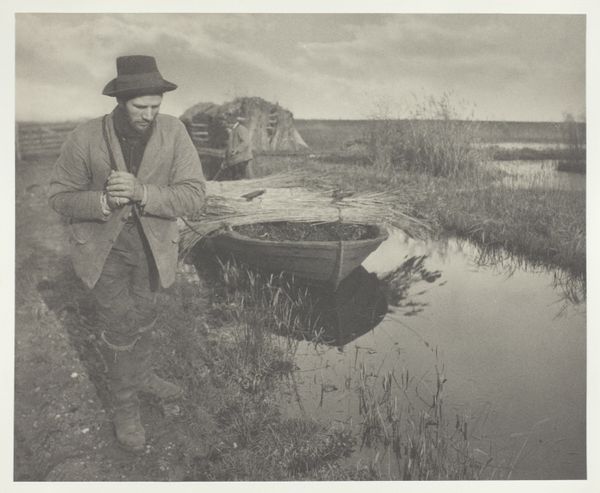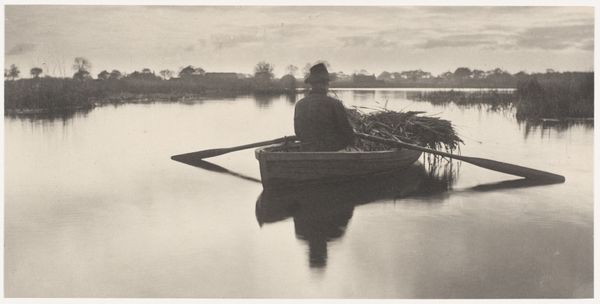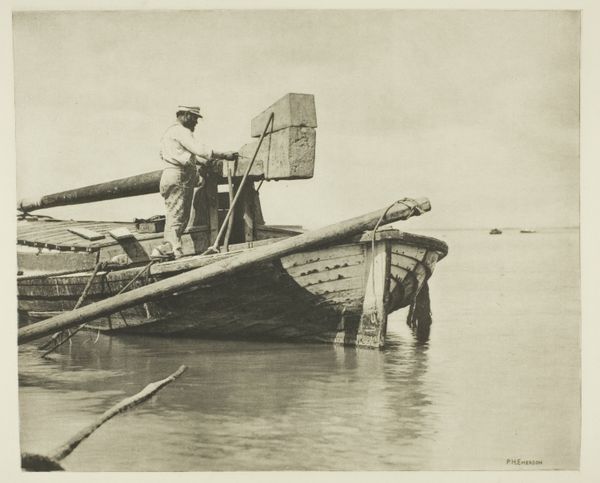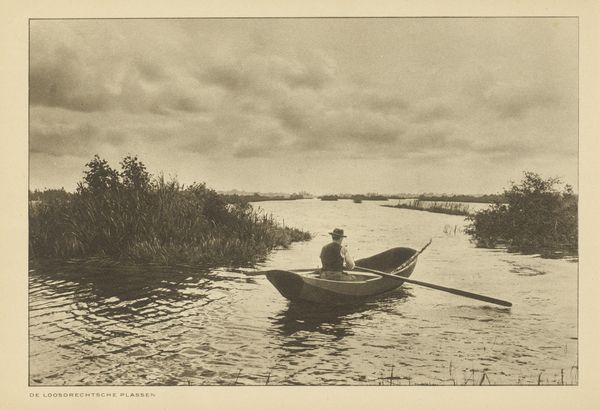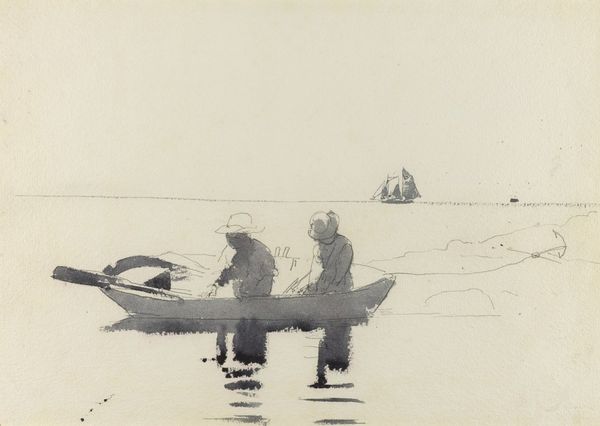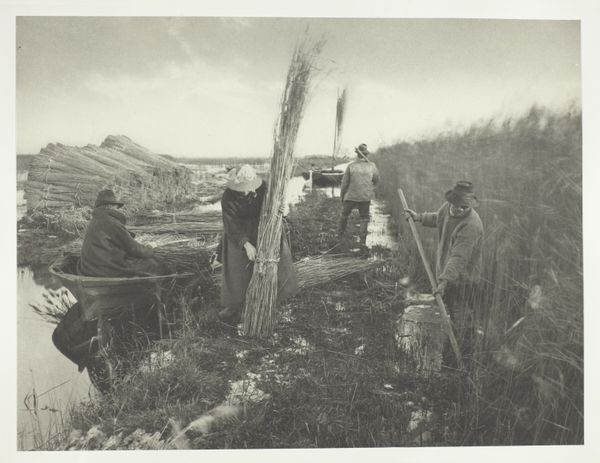
print, photography, gelatin-silver-print
#
16_19th-century
#
pictorialism
# print
#
landscape
#
photography
#
gelatin-silver-print
#
genre-painting
Dimensions: 17.6 × 28.9 cm (image/paper); 28.6 × 40.9 cm (album page)
Copyright: Public Domain
Editor: This is Peter Henry Emerson's photograph, "The Fowler's Return," taken in 1886. It's a gelatin-silver print currently residing at the Art Institute of Chicago. It's so textural, from the reeds to the rough-hewn boat. What can you tell me about this piece? Curator: Look closely at the materials presented. We see not just a photograph, but an image that documents the specific labor and resources used for this hunt. Consider the reeds fashioned into a makeshift shelter, the hand-built boat, and the fowlers' clothing. Editor: I see what you mean. It's a very…practical scene. Curator: Precisely. Think about the socio-economic context. These aren't gentlemen indulging in a sport; this photograph portrays a working-class engagement with their environment, where the line between work and subsistence blurs. How do you think Emerson frames that? Editor: I suppose it's a very direct portrayal. It doesn't romanticize the hunt. There's no heroic pose, no dramatic lighting. It’s just…there. Curator: And that "just there"-ness is key. The photograph becomes a document of material realities – the physical labor involved, the raw materials utilized, and the relationship between man and the environment born of necessity, not leisure. How might that challenge the artistic norms of the time? Editor: Maybe, instead of high art, Emerson is inviting us to appreciate craft and labor that usually goes unnoticed. Thank you, this makes me appreciate the picture more! Curator: Indeed. By focusing on these elements, we shift the focus from the purely aesthetic to the socio-economic conditions that shape the image and the lives it represents.
Comments
No comments
Be the first to comment and join the conversation on the ultimate creative platform.
